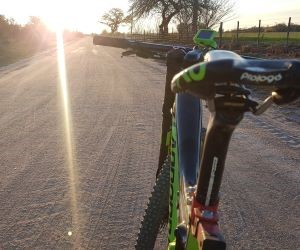Learn how to deal with punctures on long rides with prevention tips, repair techniques, and smart gear choices to keep rolling without stress.
WHAT ARE THE BEST TIPS FOR CYCLING IN COLD WEATHER?
Cycling in cold weather can be invigorating and rewarding—if you're properly prepared. Riding through winter or chilly mornings means facing windchill, icy roads, and motivation dips. But with the right clothing, smart fueling, and refined handling skills, cold-weather cycling becomes an advantage rather than a hardship. This guide delivers essential tips for riding safely and comfortably when the temperature drops, so you can maintain fitness and enjoy the season on two wheels.

Dress smart with performance layers
The number one rule for cold-weather cycling is layering. Proper clothing traps heat, blocks wind, and allows sweat to escape, keeping you dry and comfortable throughout the ride. The goal isn’t to feel toasty when you leave—it’s to stay warm once your body starts working.
Essential layering system for winter rides
Your gear choices can make or break your ride. Each layer plays a role, and skimping on any part—especially extremities—can lead to discomfort or even frostbite on longer outings.
Base layer: Moisture-wicking and snug to keep your skin dry. Merino wool or synthetic blends work best.
Mid-layer: Thermal or fleece-lined jersey for insulation without bulk.
Outer shell: Windproof and water-resistant jacket to block chill without overheating.
Gloves: Insulated, windproof, and touchscreen-friendly for full control in cold temps.
Footwear: Overshoes or winter-specific cycling boots to retain heat in your toes.
Don’t forget a thermal cap under your helmet and clear or yellow-lens glasses to block wind and low winter sun. Aim to be slightly cool when starting—your body heat will balance it out after 10–15 minutes.
Adjust your riding strategy
Cold conditions require smarter pacing, refined handling, and heightened awareness. Wet leaves, black ice, or snow patches can challenge traction and bike control. Riding more defensively helps reduce risks while still allowing you to train effectively and enjoy the ride.
Handling, pacing, and safety tactics
Even experienced riders can struggle when cold affects muscle coordination or road conditions shift unexpectedly. These tactical adjustments improve safety and efficiency in chilly environments:
Lower tire pressure: Slightly reduce PSI for better grip on slippery surfaces like wet pavement or frost.
Avoid sudden moves: Brake early, corner wide, and pedal smoothly to avoid skids.
Shorten your ride: Reduce distance and increase frequency to minimize exposure and maintain quality.
Use lights: Winter light fades fast. Front and rear LEDs should be on even during daytime rides.
Have an exit plan: Always know the quickest way home in case weather turns worse or gear fails.
Also consider route planning—loop rides near home are safer than long point-to-point adventures in freezing temps. Avoid high-speed descents when fingers are numb or visibility is low.
Fuel, hydrate, and stay motivated
Your body burns more calories in the cold just to stay warm—so nutrition and motivation play a bigger role than most riders realize. Dehydration can sneak up even faster in winter, and cold-weather apathy can lead to skipped rides. Planning ahead keeps you consistent through the season.
Cold-weather fueling and mindset tips
Success in cold-weather cycling comes from small, consistent wins. Keep your body energized and your mind focused with these pro-approved strategies:
Eat before you feel hungry: Consume carbs every 30–45 minutes—even if you don’t feel like it.
Insulate your bottles: Use insulated bottles or carry warm fluids like diluted tea or electrolyte broth.
Use caffeinated chews or gels: They boost both warmth and alertness mid-ride.
Warm-up indoors: A 5–10 minute trainer spin pre-ride can make the cold start more bearable.
Set mini-goals: Focus on ride streaks, power targets, or exploring new routes to stay engaged.
Ride with friends when possible—shared suffering beats solo shivering. And always bring a backup layer or emergency foil blanket in case you have to stop unexpectedly. Motivation thrives when planning meets preparation.
YOU MAY ALSO BE INTERESTED






